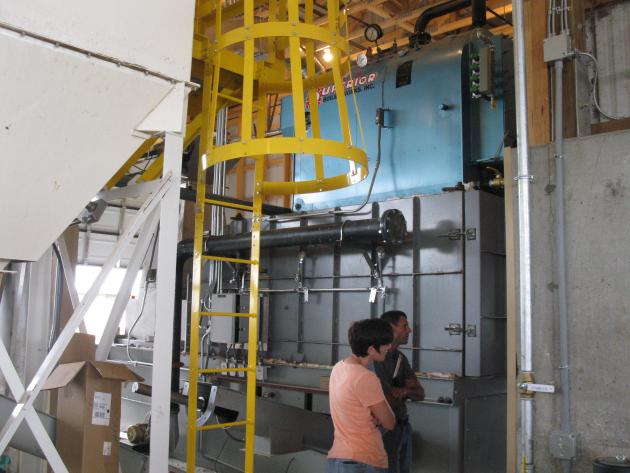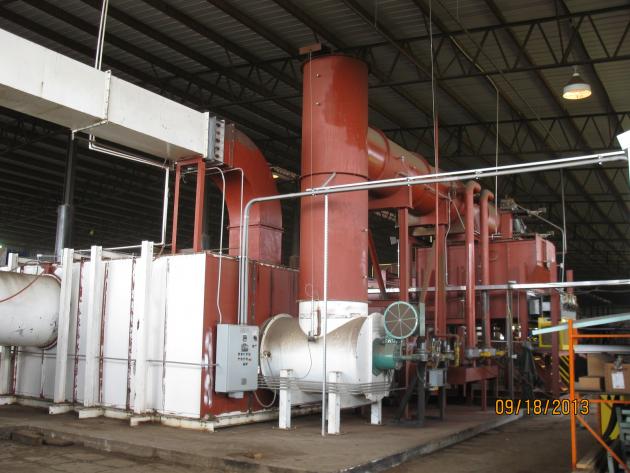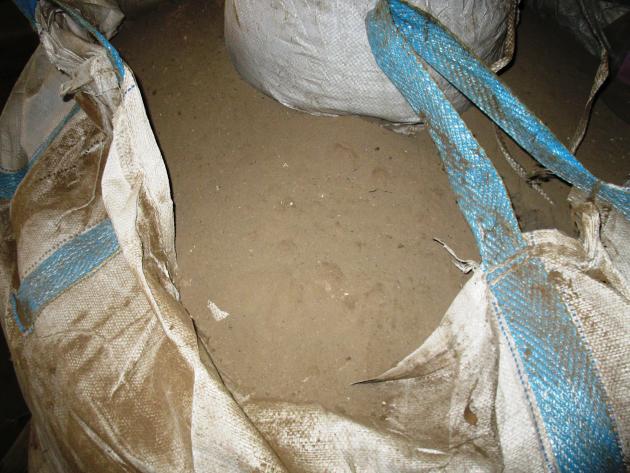How Can Thermo-Chemical Technologies Assist in Nutrient Management?
Livestock operations continue to expand and concentrate in certain parts of the country. This has created regional “hot spot” areas in which excess nutrients, particularly phosphorus, are produced. This nutrient issue has resulted in water quality concerns across the country and even lead to the necessity of a “watershed diet” for the Chesapeake Bay Watershed. To help address this nutrient concern some livestock producers are looking to manure gasification and other thermo-chemical processes. There are several thermo-chemical conversion configurations, and the one chosen for a particular livestock operation is dependent on the desired application and final by-products. Through these thermo-chemical processes manure  volumes are significantly reduced. With the nutrients being concentrated, they are more easily handled and can be transported from areas of high nutrient loads to regions of low nutrient loads at a lower cost. This practice can also help to reduce the on-farm energy costs by providing supplemental energy and/or heat. Additional benefits include pathogen destruction and odor reduction. This presentation will provide an overview of several Conservation Innovation Grants (CIG) and other manure thermo-chemical conversion projects that are being demonstrated and/or in commercial operation. Information will cover nutrient fate, emission studies, by-product applications along with some of the positives and negatives related to thermo-chemical conversion systems.
volumes are significantly reduced. With the nutrients being concentrated, they are more easily handled and can be transported from areas of high nutrient loads to regions of low nutrient loads at a lower cost. This practice can also help to reduce the on-farm energy costs by providing supplemental energy and/or heat. Additional benefits include pathogen destruction and odor reduction. This presentation will provide an overview of several Conservation Innovation Grants (CIG) and other manure thermo-chemical conversion projects that are being demonstrated and/or in commercial operation. Information will cover nutrient fate, emission studies, by-product applications along with some of the positives and negatives related to thermo-chemical conversion systems.
 What did we do?
What did we do?
Several farm-scale manure-to-energy demonstration projects are underway within the Chesapeake Bay Watershed. Many of these receive funding through the USDA-NRCS Conservation Innovation Grant program. These projects, located on poultry farms, are being evaluated for the performance of on-farm thermal conversion technologies. Monitoring data is being collected for each project which includes: technical performance, operation and maintenance, air emissions, and by-product uses and potential markets. Performance of manure gasification systems for non-poultry operations have also been reviewed and evaluated. A clearinghouse website for thermal manure-to-energy processes has been developed.
 What have we learned?
What have we learned?
The projects have shown that poultry litter can be used as a fuel source, but operation and maintenance issues can impact the performance and longevity of a thermal conversion system. These systems are still in the early stages of commercialization and modifications are likely as lessons are learned. Preliminary air emission data shows that most of the nitrogen in the poultry litter is converted to a non-reactive form. The other primary nutrients, phosphorus and potassium, are preserved in the ash or biochar co-products. Plant availability of nutrients in the ash or biochar varies between the different thermal conversion processes and ranges from 80 to 100 percent. The significant volume reduction and nutrient concentration show that thermal conversion processes can be effective in reducing water quality issues by lowering transportation and land application costs of excess manure phosphorus.
Future Plans
Monitoring will continue for the existing demonstration projects. Based on the lessons learned, additional demonstration sites will be pursued. As more manure-to-energy systems come on-line the clearinghouse will be updated. Based on data collected, NRCS conservation practice standards will be generated or updated as necessary.
 Author
Author
Jeffrey P. Porter, PE, Manure Management Team Leader, USDA-Natural Resources Conservation Service jeffrey.porter@gnb.usda.gov
Additional information
Thermal manure-to-energy clearinghouse website: http://lpelc.org/thermal-manure-to-energy-systems-for-farms/
Environmental Finance Center review of financing options for on-farm manure-to-energy including cost share funding contact information in the Chesapeake Bay region: http://efc.umd.edu/assets/m2e_ft_9-11-12_edited.pdf
Sustainable Chesapeake: http://www.susches.org
Farm Pilot Project Coordination: http://www.fppcinc.org
National Fish and Wildlife Foundation, Chesapeake Bay Stewardship Fund: http://www.nfwf.org/chesapeake/Pages/home.aspx
Acknowledgements
National Fish and Wildlife Foundation, Chesapeake Bay Funders Network, Farm Pilot Project Coordination, Inc., Sustainable Chesapeake, Flintrock Farm, Mark Weaver Farm, Mark Rohrer Farm, Riverview Farm, Wayne Combustion, Enginuity Energy, Coaltec Energy, Agricultural Waste Solutions, University of Maryland Center for Environmental Science, Environmental Finance Center, Virginia Cooperative Extension, Lancaster County Conservation District, Virginia Tech Eastern Shore Agricultural Research and Extension Center, Eastern Shore Resource Conservation and Development Council, with funding from the USDA Conservation Innovation Grant Program and the U.S. EPA Innovative Nutrient and Sediment Reduction Program.
The authors are solely responsible for the content of these proceedings. The technical information does not necessarily reflect the official position of the sponsoring agencies or institutions represented by planning committee members, and inclusion and distribution herein does not constitute an endorsement of views expressed by the same. Printed materials included herein are not refereed publications. Citations should appear as follows. EXAMPLE: Authors. 2015. Title of presentation. Waste to Worth: Spreading Science and Solutions. Seattle, WA. March 31-April 3, 2015. URL of this page. Accessed on: today’s date.

